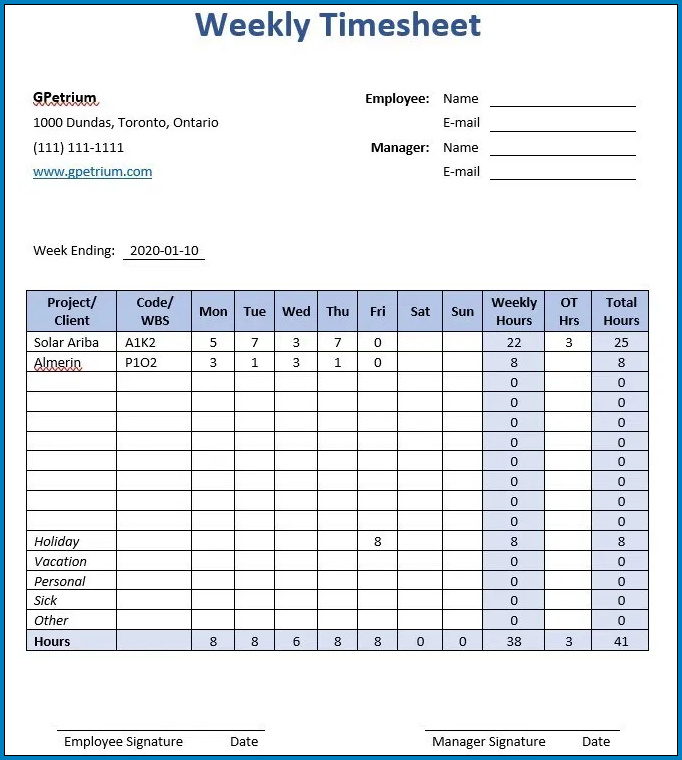
Keeping track of employee work hours is an essential task for any business. Whether you need to calculate payroll, monitor productivity, or comply with labor laws, having an accurate record of the time worked by your employees is crucial. In today’s digital age, many employers turn to weekly timesheets as a convenient and efficient way to track employee work hours.
In this article, we will explore the benefits of using a weekly timesheet, how to use it effectively, and provide some examples and templates to get you started.
What is a Weekly Timesheet?
A weekly timesheet is a document that allows employees to record their work hours for a specific week. It typically includes columns for the date, start time, end time, and total hours worked each day. Some timesheets may also include additional columns for breaks, overtime, or project codes. This simple tool provides a clear and organized way for employees to document their work hours, making it easier for employers to calculate pay and monitor attendance. These timesheets are often weekly, bi-weekly, or monthly.


Why Should You Use a Weekly Timesheet?
Using a weekly timesheet offers several advantages for both employers and employees. Here are some reasons why you should consider using this convenient tool:
- Accurate Time Tracking: A weekly timesheet ensures that employees record their work hours accurately, reducing the chances of errors or discrepancies.
- Easy Payroll Calculation: By having a record of each employee’s work hours for the week, employers can easily calculate accurate payroll amounts, taking into account regular hours, overtime, and any applicable bonuses or deductions.
- Compliance with Labor Laws: Depending on your jurisdiction, there may be specific regulations regarding maximum work hours, break times, and overtime pay. Using a timesheet helps ensure that your business complies with these laws.
- Productivity Monitoring: A weekly timesheet allows employers to monitor employee productivity by tracking the hours worked on different tasks or projects.
- Documentation for Disputes: In case of any disputes or discrepancies regarding work hours or pay, having a well-maintained timesheet can serve as valuable documentation to resolve the issue.


How to Use a Weekly Timesheet Effectively
To make the most out of a weekly timesheet, here are some tips for effective usage:
- Provide Clear Instructions: Ensure that your employees understand how to fill out the timesheet correctly. Clearly explain what information needs to be recorded and how to calculate total hours.
- Set Deadlines: Establish a deadline for employees to submit their completed timesheets. This helps ensure that you have the necessary information for payroll processing.
- Review and Verify: Regularly review the submitted timesheets for accuracy and completeness. Cross-check the recorded hours with any other attendance or project tracking systems you may have in place.
- Address Discrepancies Promptly: If you notice any discrepancies or inconsistencies in the recorded hours, address them with the employee as soon as possible to avoid any confusion or disputes later on.
- Keep Records Secure: Store the completed timesheets in a secure location to protect employee privacy and ensure easy access for future reference.
Conclusion
In conclusion, using a weekly timesheet is an effective way to track employee work hours and ensure accurate payroll calculation. It provides a clear and organized record of the time worked, making it easier for employers to monitor productivity, comply with labor laws, and resolve any disputes regarding work hours or pay.
Efficiently track employee hours with our weekly timesheet template for Excel! Customizable and user-friendly, our template allows you to record work hours, breaks, and overtime for each day of the week. Whether you manage a small business or a large organization, our template ensures accurate time tracking for payroll and project management.
Download now to streamline your timesheet management effortlessly!
Weekly Timesheet Template For Excel – Download